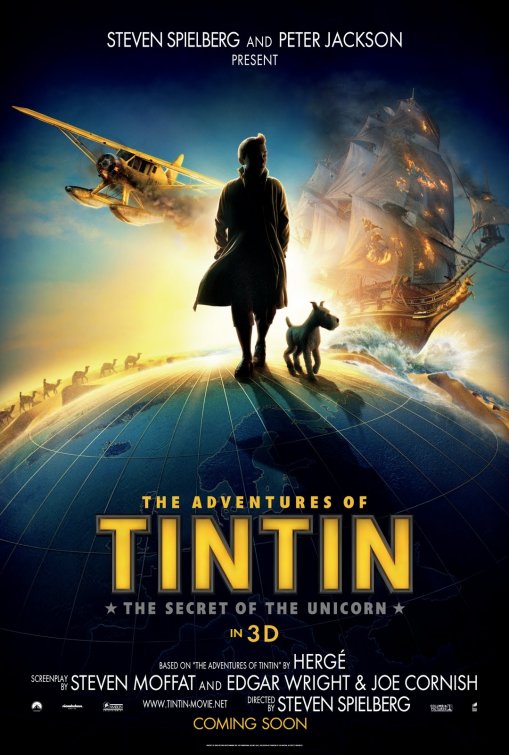
- #The adventures of tintin series series#
- #The adventures of tintin series tv#
- #The adventures of tintin series free#
Throughout the books, Snowy is frequently seen to be "talking". He does not hide the bottle in a book of Astronomy, like he did in the book, but keeps the bottle in the refrigerator, making it less obvious for young viewers that it's alcohol. Haddock is also seen drinking in The Calculus Affair and in Explorers on the Moon, setting up the scene where he leaves the rocket in a drunken state. In Tintin and the Picaros, Haddock is the only person taking wine with dinner, foreshadowing the use of Calculus' tablets to "cure" the drunken Picaros. In Tintin in Tibet, Haddock is seen taking a nip from a flask of whisky in order to set up a scene in which Snowy is tempted to lap up some spilled whisky and subsequently falls over a cliff.
#The adventures of tintin series free#
However he is told to leave as he cannot free him in time. Also Tintin finds the Japanese Policeman earlier, chained to a post on the ship and gagged. The Crab with the Golden Claws is the only adventure where Haddock's drunken state is not reduced. Haddock is seen drinking, but not as heavily as in the books.
#The adventures of tintin series series#
Therefore, international versions of the series had some alterations. However, in many countries where the producers hoped to sell the series, alcoholism is a sensitive issue. While the original books did not promote alcohol, they featured it heavily, with much humor based around it and the results of drinking. Haddock's penchant for whisky posed a problem for audience sensitivities. The high amount of violence, death and the use of firearms were toned down or removed completely. Nevertheless, this series was far more faithful to the books than Hergé's Adventures of Tintin, which had been made from 1959 to 1963. The series' original production language was English, but all visuals (road signs, posters, and settings) remained in French.Ĭertain areas of the stories posed difficulties for the producers, who had to adapt features of the books to a more modern young audience. However, later televised episodes, such as the "Moon" story and " Tintin in America", clearly demonstrated the artists' development during the course of the production of the television series. In the books, the images had been drawn over the course of 47 years, during which Hergé's style developed considerably. The rocket seen in the title sequence is animated using the same 3D techniques.Īrtistically, the series chose a constant style, unlike in the books. Each frame of the animation was then printed and recopied onto celluloid, hand painted in gouache, and then laid onto a painted background. In the episodes "Destination Moon" and " Explorers on the Moon", 3D animation was used for the moon rocket-an unusual step in 1989. The series used traditional animation techniques and adhered closely to the original books, going so far as to transpose some frames from the original books directly to screen. The series' writers included: Toby Mullally, Eric Rondeaux, Martin Brossolet, Amelie Aubert, Dennise Fordham, and Alex Boon. Philippe Goddin, an expert on Hergé and Tintin, acted as a consultant to the producers. It was the first television adaptation of Hergé's books since the Belgian animation company Belvision was responsible for Hergé's Adventures of Tintin twenty years earlier. It was produced by Ellipse (France) and Nelvana (Canada) on behalf of the Hergé Foundation. Hudecki was the primary director, but could not be credited as such due to co-production restrictions. The television series was directed by French director Stephen Bernasconi, with Peter Hudecki as the Canadian unit director.

#The adventures of tintin series tv#
The Adventures of Tintin is a Canadian/French animated TV show co-produced, written and animated in France by Ellipse Programmé and in Canada by Nelvana Limited, based on The Adventures of Tintin by Belgian comic artist Georges Prosper Remi, more commonly known by his pen name Hergé ( French pronunciation: ). There have been many unofficial books, but most of those are parodies or not part of the official series.Not to be confused with Hergé's Adventures of Tintin.

A twenty-fourth story, Tintin in Alph-Art, was never officially finished following the death of Hergé in 1983. Twenty-three completed books, came out between 19. The stories are a mixture of many different genres, including adventure, satire, and social commentary and changed over time.


 0 kommentar(er)
0 kommentar(er)
